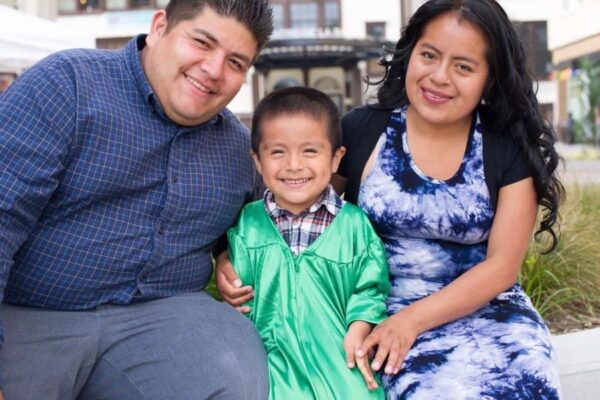Making Sense of Recent Homelessness News—And 5 Things To Do Now
Over the last few weeks we’ve seen a mix of positive and negative news about the homeless crisis in our region. Here’s a taste:
- Annual count of homeless people in King County goes down, a first since 2012
- Did chronic homelessness in King County really drop 38%?
- Amazon Led a Tax Rebellion. A Year Later, Seattle Is Gridlocked
- Amazon, Microsoft and others give tens of millions for homeless housing
This can leave a lot of people scratching their heads. Is homelessness up or down? Did Amazon cause the homelessness crisis or are they trying to help address it? Are we spending too much to solve homelessness or not enough?
What most of us see every day are tents, trash, and struggling neighbors. It makes us sad, ashamed and angry. And we want answers.
Here’s the deal. In a community that has seen incredible growth in wealth and prosperity, thousands have been left so far behind that they are sleeping on our streets. Unfortunately Seattle isn’t alone. Los Angeles, San Francisco and many other cities are experiencing record number of people living unsheltered. Why? A major reason is that only a quarter of people who qualify for housing assistance from HUD actually receive it. So, local communities have to find the government and philanthropic resources to pick up where Congress has failed.
Our homelessness system is overwhelmed. Shelters are packed, caseloads are full and affordable rent is scarce. The good news is that work is happening every day to help people exit homelessness. When we give people access to housing and help them build the income to sustain that housing – they are no longer homeless. The more we can rapidly house the people who can work, and stabilize their lives, the more we’ll unclog the system and have a better chance to help the approximately 1/3 of people experiencing homelessness who are suffering from more complicated barriers like addiction and mental illness. Unfortunately the number of people falling into homelessness is growing: More than 30,000 over the course of a year and the racial disparities among this population and the growing number of older adults is downright alarming.
Calling it an emergency or crisis has helped bring more collaboration, partnerships, efficiency, new resources, and even a Pearl Jam concert. Many other communities look to us for best practices for serving people and are in awe of the philanthropy we have in this region. But it’s just not enough and progress is at a glacial pace for the thousands who experience the trauma of homelessness.
We have a disaster on our hands and our response is not sufficient. Consider this:
- 5,971 people were sleeping in shelters during the Point In Time Count. Last year, Seattle and King County added just over 530 new emergency shelter beds across the system. But 5,200 were still sleeping outside.
- The McKinsey Report stated that we need thousands of additional units of Permanent Supportive Housing for chronically homeless people – we will open a fraction of that number this year.
We have failed to build the public and political will to invest in housing solutions at the scale of the problem. We treat homelessness with a scarcity mindset, one that fractures our system, our alliances, our hope, and too often our impact. We force ourselves to choose between populations, strategies, and solutions in the name of efficiency, accountability and prioritization.
Do we provide shelter or build housing?
Survival services today or policy change tomorrow?
Do we prioritize youth, domestic violence survivors, or older adults?
Prevention? Employment? Mental health treatment? Drug Treatment?
We need them all. But, we’re forced to choose because of a lack of resources. Our homeless response won’t have those resources until we have a clear vision for ending homelessness along with the leadership and political prowess to get the resources necessary to get the job done. Our region is working on the consolidation of Seattle and King County homelessness funding and policy-making into a new unified entity, with a shared vision on solutions, informed by the people most impacted and centered in racial equity, coordinating efforts on a shared regional action plan. We support this endeavor but it will only be effective with bold leadership and the authority and resources to solve this crisis.
So what can we do now?
- Do more of what works. Philanthropy and government must continue to invest in effective housing and income solutions. Prevention, diversion, rental subsidies, permanent supportive housing and jobs.
- Temporary shelter. We need to immediately do everything we can to bring more people inside. This includes more shelters – yes, even some of those FEMA-style shelters – and safe parking lots for people staying in a vehicle. These aren’t long-term solutions but better is better for some.
- Do no harm. Policies that punish people for being unhoused- without offering an adequate housing solution – are ineffective and cruel.
- Advocate. Advocate. Advocate. We need to advocates for local, state, and federal policies and revenue that prevent homelessness, help people quickly exit homelessness, and increase the supply of permanent supportive housing and housing with affordable rents.
- Vote . Homelessness isn’t just a local problem. It’s a national disaster. A plan to address and fund a national response to homeless should be a requirement for the 2020 Presidential Election.





Comments